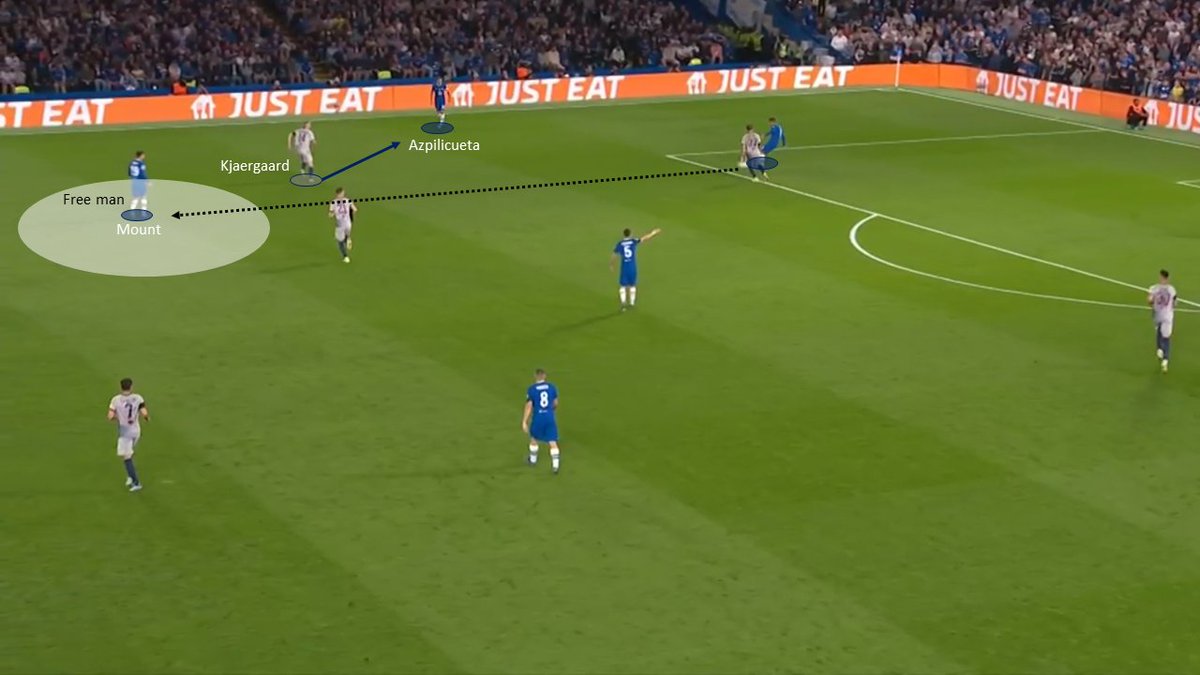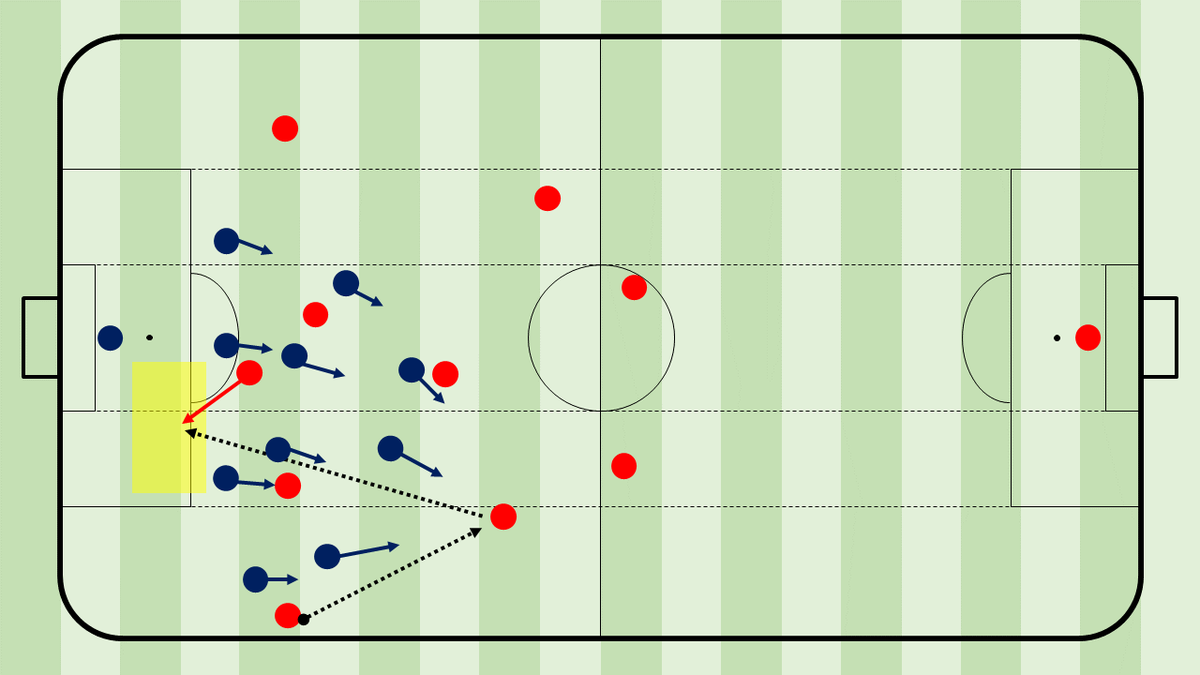
Aspect Analysis: How Brighton applied the 3rd/4th man principle vs Chelsea #BHACHE
The 3rd and 4th man principle can be highly beneficial for every team. De Zerbi’s side utilized it for various purposes, which allowed them to beat Chelsea.
[THREAD]



The 3rd and 4th man principle can be highly beneficial for every team. De Zerbi’s side utilized it for various purposes, which allowed them to beat Chelsea.
[THREAD]




Many teams use third man combinations in the build-up to find a free man. And so did Brighton. They often found the free centre back through a player from the double pivot, enabling them to progress higher up more easily. 







Moreover, players from the front line could drop in between the lines and then lay the ball off, allowing Brighton to create promising situations. 







Additionally, when faced with high pressure, De Zerbi’s team regularly used the third man combination to quickly get out of the pressure and find a player with more time and space. 



The first pass usually attracts pressure and focus from the opponents, leaving the third man out of sight. Especially when the first pass is a vertical pass, the close body position by the receiver is usually a pressing trigger for the opponent. 







The nature of the third man combination is basically the same as a one-two. However, the third man combination can be executed with more pace, as the players are already in their position, while at a one-two, one player occupies two positions of the triangle. 







To get in between the lines or in behind, Brighton made use of 3rd man or even 4th man runs. These are very difficult to defend when executed with full pace, as the 3rd and 4th man often goes unnoticed by the defenders because the initial 1st/2nd pass attract pressure and focus. 







Brighton’s third goal came from a 4th man run (up-back-through combination), with Estupinian arriving in behind with a dynamical advantage. The fullback then crossed inside and Chalobah clears the ball in his own goal. 







• • •
Missing some Tweet in this thread? You can try to
force a refresh






























